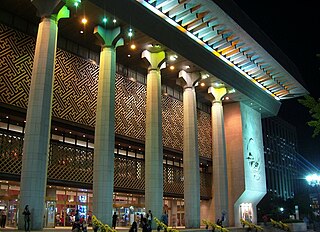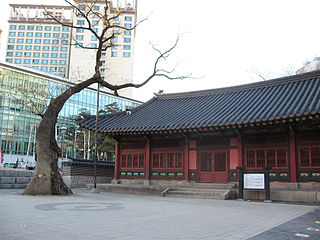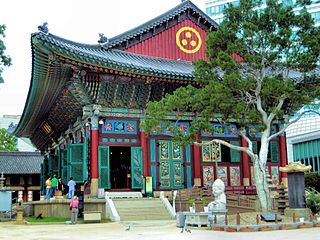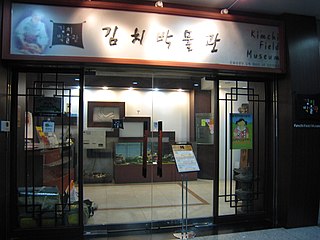Self-guided Sightseeing Tour #4 in Seoul, South Korea
Legend
Guided Free Walking Tours
Book free guided walking tours in Seoul.
Guided Sightseeing Tours
Book guided sightseeing tours and activities in Seoul.
Tour Facts
3.6 km
87 m
Experience Seoul in South Korea in a whole new way with our free self-guided sightseeing tour. This site not only offers you practical information and insider tips, but also a rich variety of activities and sights you shouldn't miss. Whether you love art and culture, want to explore historical sites or simply want to experience the vibrant atmosphere of a lively city - you'll find everything you need for your personal adventure here.
Activities in SeoulIndividual Sights in SeoulSight 1: Sundial(Angbu Ilgu)
The Anbu Ilgu (仰釜日晷) is a sundial that has been produced and used since the 16th year of King Sejong the Great of Joseon in 1434, and was designated as Treasure No. 845 of the Republic of Korea on August 9, 1985 in recognition of its scientific, historical, and artistic value. Jang Young-sil, Icheon, and Kim Jo participated in the early production of the Anbuilgu, and since there are no surviving Anbuilgu made at this time, the 18th-century Anbuilgu was designated as a treasure. Designated as a treasure, the portable anbuilgu was made by Kang-gun and is small enough to fit in a pocket. In addition, there are Jang Young-sil's inventions, such as the Pavilion Tower, the Honcheonui, the Sundial, the Water Clock, and the Celestial Train Field Map.
Sight 2: Cheugugi(Rain Gauge)
Cheugugi is the first well-known rain gauge invented and used during the Joseon dynasty of Korea. It was invented and supplied to each provincial offices during the King Sejong the Great's reign. As of 2010, only one example of the Cheugugi remains, known as the Geumyeong Cheugugi, which literally means "Cheugugi installed on the provincial office's yard." It is designated as National Treasures #561 of Korea and was installed in provincial office of Gongju city, 1837 by King Yeongjo, the 21st king of Joseon. In addition, the official record of the rainfall by Cheugugi from King Jeongjo's reign to Emperor Gojong's reign is preserved.
Sight 3: Armillary Sphere
An armillary sphere is a model of objects in the sky, consisting of a spherical framework of rings, centered on Earth or the Sun, that represent lines of celestial longitude and latitude and other astronomically important features, such as the ecliptic. As such, it differs from a celestial globe, which is a smooth sphere whose principal purpose is to map the constellations. It was invented separately, in ancient China possibly as early as the 4th century BC and ancient Greece during the 3rd century BC, with later uses in the Islamic world and Medieval Europe.
Sight 4: Sejong Grand Theater
Sejong Center for the Performing Arts (Korean: 세종문화회관) is the largest arts and cultural complex in Seoul, South Korea. It has an interior area of 53,202m². It is situated in the center of the capital, on Sejongno, a main road that cuts through the capital city of the Joseon Dynasty. The center took 4 years to complete, opening in 1978. It was "built as a cultural center for Seoulites". It currently contains one of the biggest pipe organs in Asia.
Sight 5: Statue of Peace
The Statue of Peace, often shortened to Sonyeosang in Korean or Shōjo-zō in Japanese and sometimes called the Comfort Woman Statue , is a symbol of the victims of sexual slavery, known euphemistically as comfort women, by the Japanese military during World War II, specifically, the period from the beginning of the Second Sino-Japanese War until the end of the Pacific War. The Statue of Peace was first erected in Seoul to urge the Japanese government to apologize to and honour the victims. However, it has since become a site of representational battles among different parties.
Sight 6: Postal Administration
The General Post Office (郵政總局) was a government office in charge of postal services in the late Joseon Dynasty and can be said to be the first post office in the history of Korea. The building is designated as Historic Site No. 213.
Sight 7: Jogyesa Temple
Get Ticket*Jogyesa is the chief temple of the Jogye Order of Korean Buddhism. The building dates back to the late 14th century and became the order's chief temple in 1936. It thus plays a leading role in the current state of Seon Buddhism in South Korea. The temple was first established in 1395, at the dawn of the Joseon Dynasty; the modern temple was founded in 1910 and initially called "Gakhwangsa". The name was changed to "Taegosa" during the period of Japanese rule, and then to the present name in 1954.
Sight 8: Mokin Museum
The Mokin Museum is a museum in Seoul, South Korea.
Sight 9: Museum Kimchikan
Museum Kimchikan, formerly Kimchi Field Museum, is a food museum in Insa-dong, Jongno District, Seoul, South Korea. It originally opened in 1986 as the first such museum in Korea, and has since moved locations twice. It focuses on kimchi: one of the staples of Korean cuisine.
Sight 10: Palgakjeong Pavilion
Tapgol Park Octagonal Pavilion (塔gol公園 八角亭) is a pavilion built along with Tapgol Park built by Brown in England. On September 11, 1989, it was designated as Tangible Cultural Property No. 73 by the Seoul Metropolitan Government
Sight 11: Unhyeongung (Palace)
.jpg)
Unhyeongung (Korean: 운현궁), also known as Unhyeongung Royal Residence, is a former Korean royal residence located at 114-10 Unni-dong, Jongno-gu, Seoul, Korea. It was formerly the residence of the Heungseon Daewongun a prince regent of Korea during the Joseon period in the 19th century, and father of Emperor Gojong. Gojong himself also lived in this residence until age 12 when he assumed the throne. It is currently a museum and is open to the public free of charge.
Share
How likely are you to recommend us?
Disclaimer Please be aware of your surroundings and do not enter private property. We are not liable for any damages that occur during the tours.
GPX-Download For navigation apps and GPS devices you can download the tour as a GPX file.
.jpg)
.jpg)






